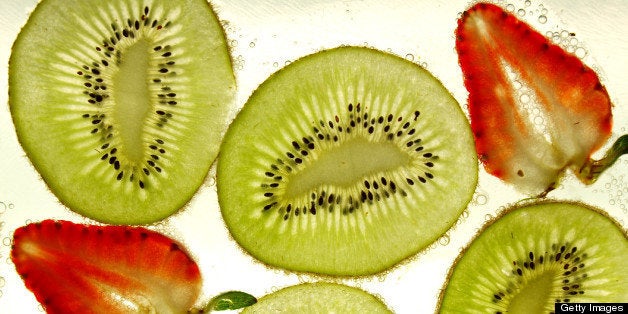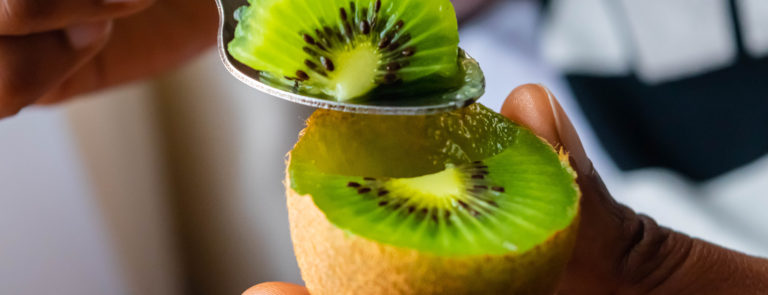Checking out Tastes: What Do Kiwis Taste Like? A Cooking Journey
Wiki Article
Checking Out the One-of-a-kind Features and Remarkable Biology of Kiwi: A Comprehensive Research Study
Welcome to the interesting world of kiwi! Prepare to be surprised as we discover exactly how kiwis have actually adapted to their flightless presence and uncover their ecological relevance.Physical Attributes
What are the physical characteristics of a kiwi bird? Well, let's dive right in! The kiwi bird is a little, flightless bird belonging to New Zealand. It determines regarding 12 to 14 inches in height and weighs around 2 to 7 extra pounds. Among one of the most distinctive functions of the kiwi bird is its lengthy, slender expense. This costs is not only used for feeding, however also for excavating burrows in the ground.The kiwi bird has an one-of-a-kind quill, with soft, hair-like feathers that look like fur. These plumes are gray or usually brownish in shade, helping the bird assimilate with its forested habitat. Unlike many birds, the kiwi has small wings that are hidden below its feathers and are not useful for flying. Instead, it depends on its strong legs and effective claws for wheelchair.
Another fascinating physical feature of the kiwi bird is its nostrils found at the pointer of its costs. This adjustment allows them to ferret out worms and pests, their key resource of food, in the ground cover on the forest floor (what do kiwis taste like). Additionally, the kiwi bird has huge, round eyes that are adjusted for low-light conditions, as they are largely nighttime
Feeding Habits
To comprehend the feeding practices of the kiwi bird, you need to observe its foraging actions and nutritional choices. Kiwis are one-of-a-kind in their feeding practices, as they are mostly nocturnal and rely heavily on their sense of scent to find food. They have a long, slender bill that permits them to penetrate the ground searching for pests, worms, and various other invertebrates. These birds use their solid feeling of smell to identify target hidden under the surface, and after that use their expense to remove it.Kiwis are omnivorous, meaning they eat both plant and animal matter. In addition to bugs, kiwis likewise take in seeds, fruits, and berries. They have a certain fondness for fallen fruits that are abundant in sugars, such as the berries of the shrubby tororaro plant. Kiwis have been observed feeding on a wide array of plant types, showing their adaptability to various food resources.
Interestingly, kiwis do not have a plant, which is a specialized part of the digestive system located in several birds. Instead, their food passes directly from the esophagus to the stomach. This may be a result of their one-of-a-kind evolutionary history and ecological specific niche.
Recreation and Breeding
Now allow's look into the remarkable globe of kiwi reproduction and breeding, structure upon our previous expedition of their special feeding behaviors. Kiwis have a rather fascinating reproductive procedure. They are virginal birds, suggesting they form long-term sets. When a pair has actually developed, they will certainly remain together for life, which can be approximately thirty years in the wild.Breeding season for kiwis generally takes place between June and March. Throughout this moment, the women kiwi will lay one to 2 eggs, which are unusually big compared to the bird's body size. Actually, kiwi eggs are the largest of any type of bird symmetrical to body weight. After the eggs are laid, both the man and women take turns breeding the eggs, with each taking changes that can last as much as 12 days.
Once the chicks hatch, they are born able and fully feathered to see (what do kiwis taste like). They are additionally rather precocious, indicating they have the ability to deal with themselves relatively quickly. Nonetheless, also after the chicks have actually hatched, the parents remain to offer care and security for them until they are fully independent, which can take several months.

Adaptations to Flightless Existence
As a flightless bird, the kiwi has undertaken several changes to its composition and behavior that permit it to flourish in its special atmosphere. Unlike various other birds, kiwis have tiny, vestigial wings that are virtually pointless for flying.One more adaptation that kiwis have actually established is their solid legs and feet. These functions allow them to successfully stroll and run, making up for their failure to fly. The kiwi's legs are find more located and muscular much back on its body, giving it with a reduced facility of gravity and ideal balance. Furthermore, its feet are furnished with sharp claws that help in digging and foraging for food.
In order to endure without the ability to fly, kiwis have actually likewise established an eager feeling of scent. Their long, slender beaks home highly delicate nostrils, permitting them to find bugs and worms beneath the forest flooring. This remarkable adaptation aids kiwis situate food sources and maintain a balanced diet.
Ecological Value
The environmental importance of kiwi hinges on their function as key seed dispersers in their indigenous environment. As they move through the forest floor, kiwi forage for click this link insects, worms, and a selection of plants. In the process, they consume berries and fruits, which consist of seeds. These seeds then pass with the kiwi's digestive system unscathed and are later dispersed with their feces. This unique procedure helps in the all-natural regeneration of woodlands.The kiwi's capacity to distribute seeds is important for keeping the biodiversity and balance of their environment. By spreading out seeds throughout various locations, they add to the growth and wealth of different plant types. Consequently, these plants supply food and shelter for other pets, creating a web of interdependencies within the ecological community.
Furthermore, kiwi play an essential function in managing the population of specific plant species (what do kiwis taste like). Some plants create an excessive number of seeds, which can lead to overcrowding and minimal resources for other plants. By taking in and dispersing these seeds, kiwi assistance manage the growth of such plants, making sure a healthier and extra varied environment
The eco-friendly relevance of kiwi prolongs beyond their duty as seed dispersers. Their burrowing behavior additionally adds to dirt aeration and nutrient recycling, boosting the overall health of the forest floor. Furthermore, their feeding routines can assist control insect populations, lowering the risk of pest outbreaks that can damage plant life.
Verdict
In final thought, discovering the distinct features and interesting biology of kiwi reveals its physical attributes, feeding behaviors, recreation and reproducing patterns, in addition to its adjustments to a flightless existence. With its distinguishing characteristics and environmental significance, the kiwi functions as an exceptional instance of nature's diversity and adjustment. By comprehending and valuing the kiwi's function in its environment, we can better advertise conservation efforts to ensure the preservation of this exceptional species for future generations.
Report this wiki page